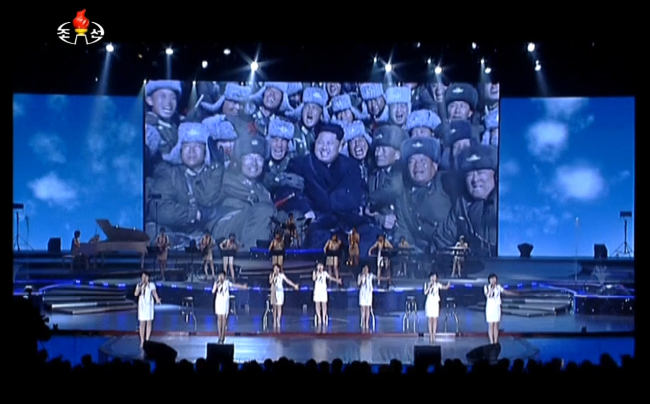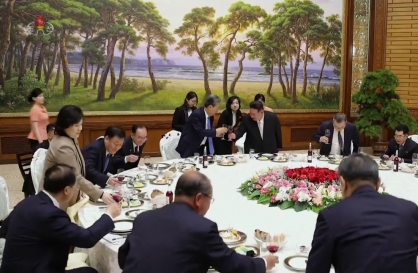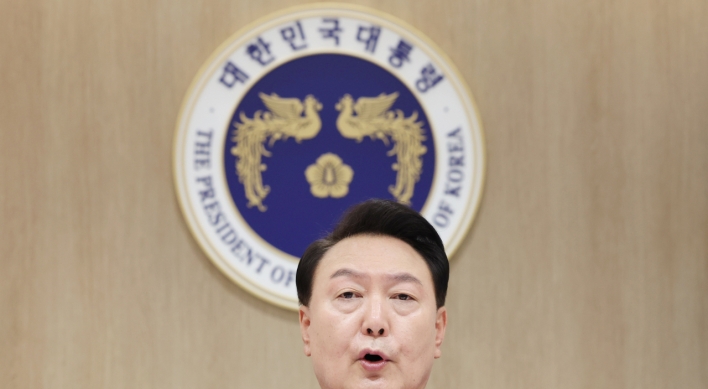North Korea’s efforts to idolize its late former leaders appear to have recently been reduced, an indication that current ruler Kim Jong-un is striving to wean himself from the influences of his predecessors and build his own leadership, analysts said Monday.

The current leader has recently appeared in a series of public events without wearing a badge depicting the portraits of the North’s national founder and his grandfather Kim Il-sung, and former leader and his father Kim Jong-il.
The portrait of Kim Il-sung has also disappeared from a new airport facility in Pyongyang, a rare scene in the country that has long worshiped the two former leaders with badges on people’s formal suits, gigantic statues in major cities and other propaganda tools.
In a musical performance by the country’s top Moranbong troupe in April, there were no scenes on the backdrop that showed the two late leaders, according to news agency Yonhap. Previously, any performance by the troupe presented photos of the late leaders carrying out state affairs in a show of national respect to them.
Chin Hee-gwan, a unification studies professor at Inje University in Gimhae, South Gyeongsang Province, said that the absence of the former leaders’ portraits in some public places and the current leader’s decision to not wear a badge of his grandfather and father are expressions of Kim’s confidence in his management of state affairs.
“After the three-year mourning period ended in December 2014, Kim Jong-un seems to be showing his confidence as a leader of the country,” he said.
“As an expression of his pride and confidence, and his grip on power, he has apparently shown up in public places without a badge carrying the portraits of the former leaders. His father also did that when he appeared confident about his leadership.”
Referring to the absence of the portrait of former leader Kim Il-sung at a new airport building in Pyongyang, Chin said the isolated state appears to be moving in line with the “international trend” in which countries do not put large portraits of their former leaders in public facilities.
Chang Yong-seok, a senior analyst at Seoul National University’s Institute for Peace and Unification Studies, said the young North Korean ruler appears to be striving to “stand on its own” away from the influences of the former charismatic predecessors.
“As Kim has been trying to establish his authority as a legitimate leader, he might have thought that he could not capitalize on the halo of his grandfather and father for good -- a reason why he has been trying to build his own, independent leadership, and projecting that image to his people,” he said.
Chang noted that the young leader in his early 30s might also refuse to follow the old propaganda practices of putting portraits at major facilities and carrying out other activities that seem to be outmoded by international standards.
By Song Sang-ho (sshluck@heraldcorp.com)











![[KH Explains] How should Korea adjust its trade defenses against Chinese EVs?](http://res.heraldm.com/phpwas/restmb_idxmake.php?idx=644&simg=/content/image/2024/04/15/20240415050562_0.jpg&u=20240415144419)







